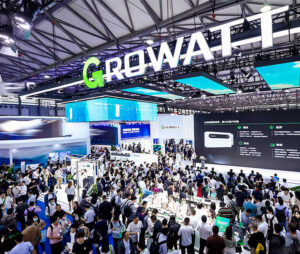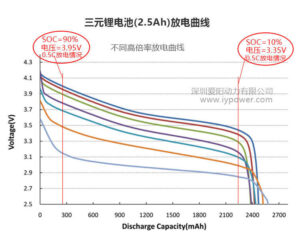Into the post-subsidy era, technology maniac Wang Chuanfu once again led BYD to seize the new technological heights, he recently revealed in the forum of 100, BYD self-developed “blade battery” in March this year will be in Chongqing factory mass production for the first time, listed in June BYD Han will take the lead, which indicates that BYD has never given up the iron phosphate lithium battery technology, And showed the confidence to win on this track.
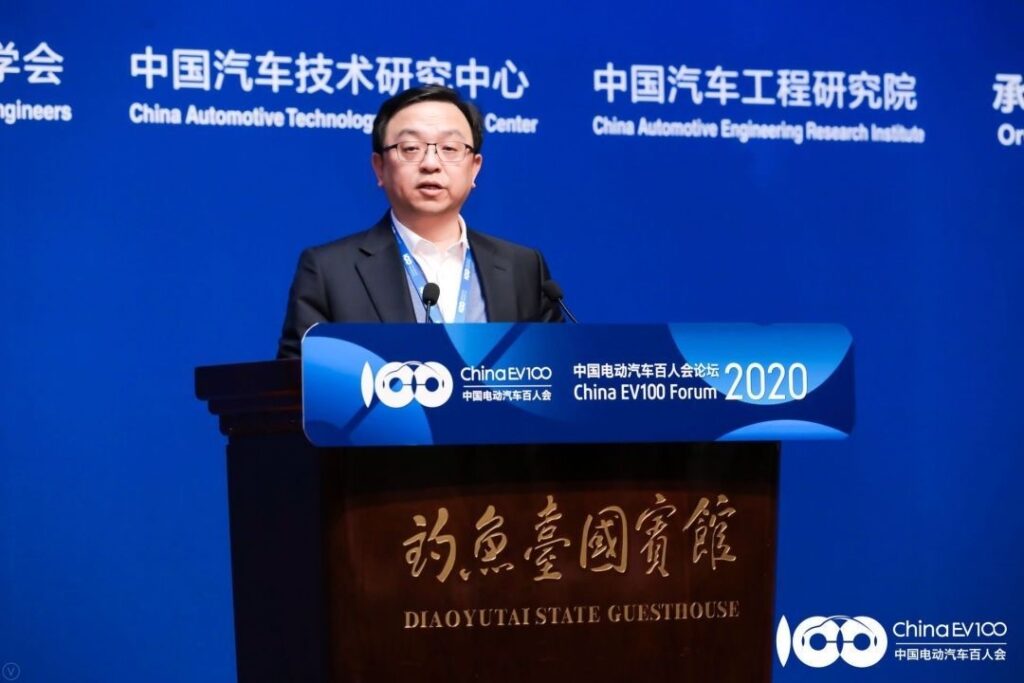
How sharp is the blade?
Wang’s “blade battery” was highly praised by Ouyang Ming, an academician of the Chinese Academy of Sciences and vice president of the China Council of 100 on Electric Vehicles, as the most beautiful technological innovation in battery pack system specific energy by battery enterprises last year.

The blade battery, which BYD calls a ‘super iron lithium battery,’ is named ‘blade’ because it is shaped like a flat, long blade compared to a traditional square battery. Byd patent of the National Intellectual Property Office shows that the length of the “blade battery” can reach up to 2500mm, which is more than 10 times that of the traditional ordinary lithium iron phosphate battery. It greatly improves the efficiency of the cell group, and is a series of cells whose size can be adjusted according to different needs.
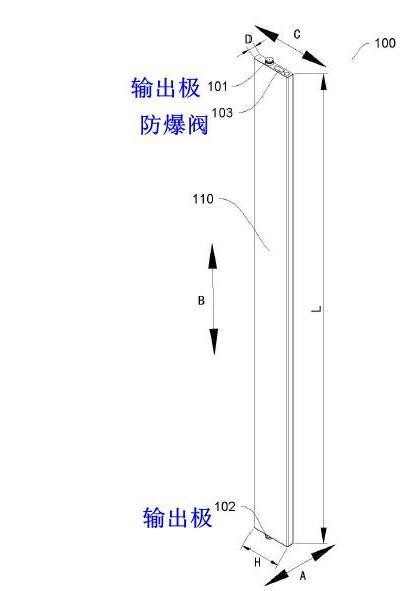
Shape diagram of BYD blade cell (Source: State Intellectual Property Office)
The volume/energy density of blade batteries is 50% higher than that of traditional lithium iron phosphate batteries. According to the patent, the “blade battery” technology has a volume energy density of more than 330Wh/L, which is more than 30% higher than the original battery system.
The cost of battery packs is expected to be reduced by 30 percent by saving materials and labor costs. The discharge rate is also greatly increased, and the service life is as long as 8 years and 1.2 million kilometers, which can reach the maximum mileage of 600 kilometers. Because the blade battery is thinner than the traditional square battery, it has better heat dissipation effect.
Academician Ouyang Minggao said, “The blade battery is wired on both sides and used as a cooling duct. All kinds of things are put on both sides, and nothing else is put in the middle. The stiffness and strength of the blade battery is very good, and it can also be used as structural parts, which is an important innovation. Blade battery technology can effectively alleviate the previous lithium iron phosphate battery volume energy shortage. An A0-class model can hold nearly 60kWh, which basically solves the range problem.”
Everbright securities analysis said, “blade battery” from the vehicle, battery pack, cell overall level of development of new solutions, the effect of structural improvement is very obvious, from the data results analysis, there may also be the possibility of improving the cell internal materials.
Spring for lithium iron phosphate?
In 2019, many spontaneous combustion incidents of new energy vehicles occurred frequently. How to guarantee the safety of new energy vehicles has become the focus of attention in the industry.
In the original era of high subsidies, high energy density and high driving range were the core indicators. More and more automobile enterprises adopted ternary lithium batteries with a high proportion of nickel, from “532” to “622” and then to “811”. The cobalt and manganese components to maintain battery stability only accounted for about 20%, and the driving range was indeed greatly improved, but the battery safety risk was also increasing.
At the just-concluded Committee of 100 Electric Vehicle Advanced Safety Technology sub-forum, Sun Fengchun, an academician of the Chinese Academy of Engineering and a professor at the Beijing Institute of Technology, said that passenger cars are currently the main force in the promotion of new energy vehicles, with an increase of 8.5 percent in 2019 compared with 2018, and the total number of passenger cars connected to the national platform also exceeded 78 percent. At the same time, passenger car accidents accounted for a relatively high proportion, reaching 57%. The static state after full charge is the main cause of fire accident. Most of the vehicle combustion accidents occurred in high SOC conditions, with 57 percent of the accidents occurring at more than 85 percent and 14 percent at 100 percent SOC. The accident rate of ternary lithium battery is the highest, reaching 89%.
From the perspective of battery thermal stability alone, the thermal runaway temperature of ternary lithium battery is lower than 300℃, which requires very high requirements for battery management system. Anti-overheating protection devices and battery management system are needed to protect battery safety. The thermal runaway temperature of lithium iron phosphate battery is generally 500-600℃, and its internal chemical composition begins to decompose. Lithium iron phosphate is therefore superior to the safety that is currently most valued.
“To strengthen the construction of the safety standard system in the industry, involving the safety of power batteries, we need to be more cautious,” Wang Chuanfu said at the Committee of 100 forum.
In 2019, BYD’s shipments of lithium iron phosphate batteries decreased by 37%. Citic Securities predicts that after 2020, “blade battery” technology will drive the recovery of lithium iron, and the installed number of BYD lithium iron phosphate batteries will increase significantly.
The competition in the new energy automobile industry, after several years of noise, is now back to the basic logic of competition by technology and products.
As the country’s largest shipper of lithium iron phosphate batteries, BYD has significant market scale and cost advantages. Technological innovation promotes the volume energy density of lithium iron phosphate batteries to increase significantly, and the single-dominant competitive pattern of three-way lithium batteries is expected to be broken.
Get over the cost
In the post-subsidy era, new energy vehicle enterprises need to adjust their product structure and reduce costs to cope with the market-oriented competition in which subsidies will be completely withdrawn after 2020.
Ouyang Minggao believes that in 2019, the cost of China’s power battery system has been reduced to about 0.6 yuan to 1 yuan /Wh, and there is still room for the cost of batteries to fall in the next five years, and it is expected to fall to 0.7 yuan /Wh before 2025. Lithium iron phosphate also has room to fall, but at the same time, it is necessary to stress that the recycling value of batteries needs to be explored. In this regard, the cost advantage of lithium iron phosphate batteries is very obvious.
Lithium iron phosphate batteries do not contain precious metals, and the main raw materials for the production of cathode materials, iron oxide and lithium carbonate, are abundant in domestic reserves. If the market demand for new energy vehicles expands, the cost of upstream materials will also plummet, driven by the scale effect. The price of positive material, which accounts for more than 30% of the cost of lithium iron phosphate battery, will decrease rapidly.
With the development of “blade battery” is expected to significantly reduce the cost of BYD battery system. According to the calculation of CITIC Securities Research Report, if BYD’s power battery shipment is 15GWh in 2020, and the replacement ratio of “blade battery” is taken as the scenario assumption, assuming that the replacement ratio is 100%, 50%, 25% and 0% respectively, after calculation, the replacement of blade battery will save the cost of 25.5/12.8/640/0 billion for BYD respectively.
In 2019, the average cost of BYD’s new energy passenger car battery pack is 0.85 yuan /Wh. After replacing it with lithium iron phosphate blade battery, the cost is expected to drop by 30%, and the cost is expected to drop to 0.6 yuan /Wh. As the current average level, the battery capacity of a pure electric passenger car is about 60kWh. If it is replaced by “blade battery”, the cost of single-cycle battery will be reduced by about 15,000 yuan, which is directly reflected in the vehicle price.

Many foreign manufacturers are very interested in BYD’s “blade battery” technology, and at the press conference of the 10th anniversary of BAIC New Energy on January 15, Ma Fangli, general manager of BAIC New Energy, revealed that “our battery cooperation with BYD is under discussion and evaluation.”
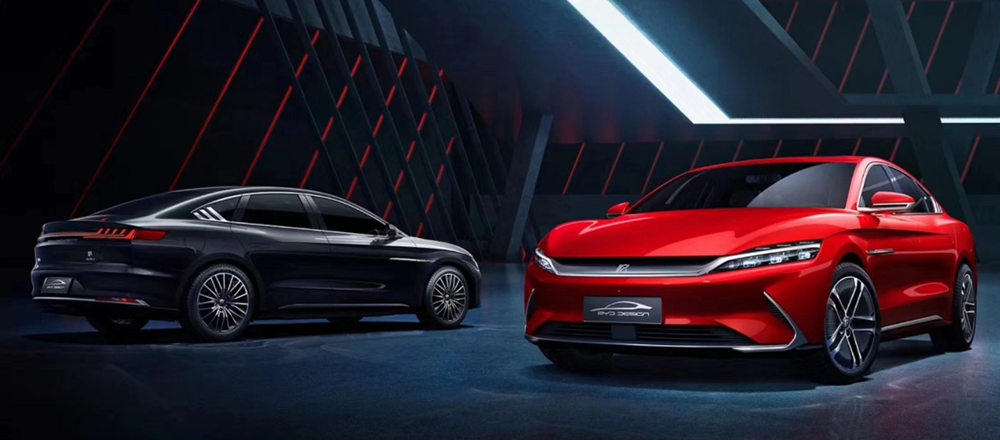
Although BYD has not said publicly whether blade batteries will be available, many of its peers appear to be waiting.
Ii. Technical analysis of BYD blade cell
From the point of view of this cell, in fact, the height of 118 is made according to the current normal coil core, and the thickness of 13.5 is not much more than the thickness of the soft pack. It goes from 435mm to 905mm and up to 2500. How is it connected inside this cell? This is actually a bit like the hot Combo before, where the cell consists of a long little “module” of the battery, comprising the shell and the coil assembly inside, including multiple groups of poles that can be made in series or in parallel.
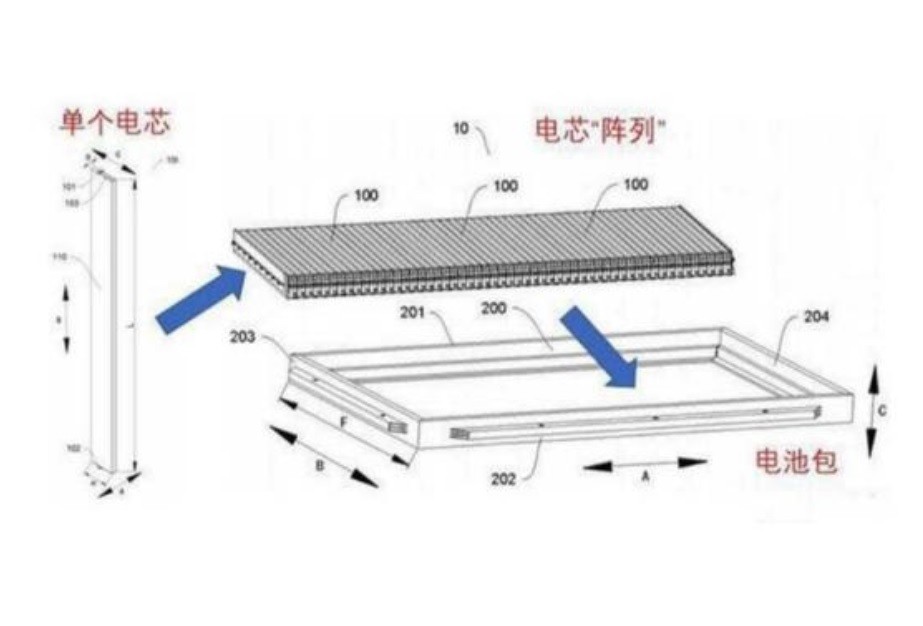
In the series scheme, partitions are arranged between the two adjacent polar core groups, dividing the space of the cell into a number of holding chambers, which form a similar honeycomb structure and are equipped with sealing and liquid injection channels.

In the series structure, a cell is connected in series to form a small module of 3.2V*3=9.6V. There are many design points in series design:
1) In series design, due to the different voltages between different polar core groups, the local potential of the aluminum shell will be too low, which is easy to cause lithium ions to be embedded in the shell, forming lithium aluminum alloy to corrode the aluminum shell. An isolation film is set between the shell and the polar core group to isolate the contact between the electrolyte and the shell
2) When the electrolyte in different core groups is connected, there is the problem of internal short circuit; There is a high potential difference between different core groups (LFP potential difference is about 4.0 ~ 7.6V). The electrolyte will decompose due to the large potential difference and affect the battery performance, so the separator is designed
3) the core connector includes copper connecting part and aluminum connecting part, copper and aluminum have potential difference to lithium, in the contact position of the copper connecting part and aluminum connecting part of the electrolyte contact position is easy to corrosion, so the design uses the isolation plate, and set the packaging structure of the core connector package in the connection through the hole because do series make up the capacity is not big, This is expected to have some benefit in PHEVs, plus BYD can actually make the voltage higher than 400V, so the battery capacity can be smaller.
It’s even better to have a parallel structure, where you combine the single end of the cell, the two taps, and the two sides of the cell, which is equivalent to using two paths in series, but connecting them in series at one end, so that the cell is connected one by one. The details of this cell need to be digested, but I believe the first version we’ll see is this one, which is more reliable than the series above, and can be scaled up.


